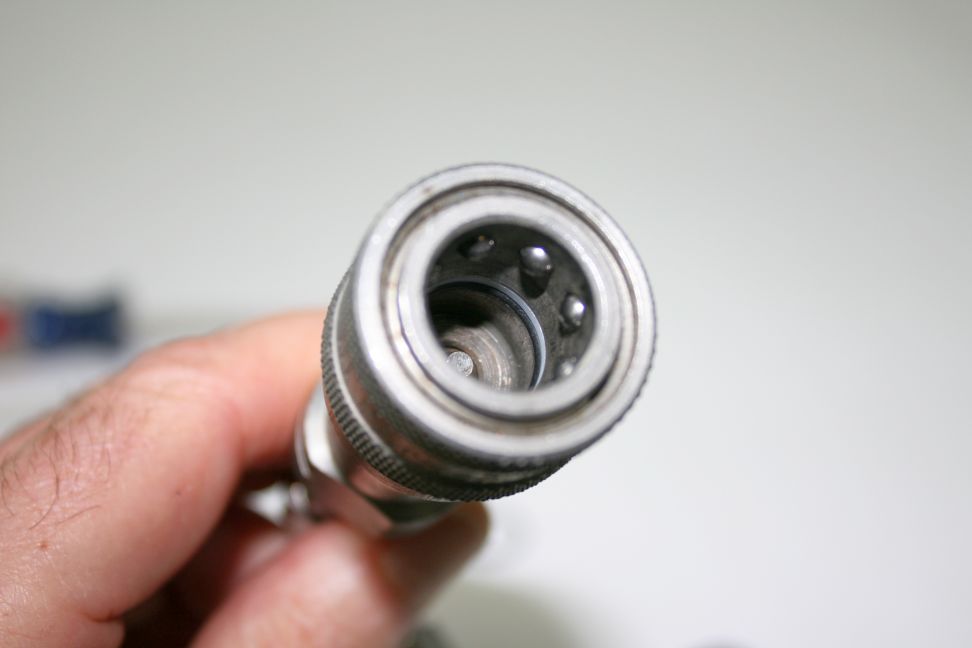Sep 01, 2025
Hydraulic quick fittings and couplers are critical components in a hydraulic system, as they play an essential role in maintaining the safety and efficiency of the system. It is important to understand how to select the correct fitting, since there are many types of hydraulic couplers available, and finding the most suitable one for your specific application can be challenging.
Hydraulic quick connect fittings can generally be categorized by sealing method, pressure rating, and connection type. Therefore, this article will focus on the common operations problems include identifying, installing, removing, replacing, measuing and using hydraulic quick couplings.
A hydraulic quick coupler is a type of fitting used for the rapid connection and disconnection of hydraulic system lines without the need for tools. By automatically opening the valve mechanism during connection and separation,This quick connector can effectively reduce equipment downtime and improve industrial production efficiency. Hydraulic quick connectors generally consist of a male plug and a female plug. When they are connected together, they can form an effective leak-proof connection. The locking mechanism can ensure that the connector is properly connected during use and can be easily unlocked when needed.
Possible Causes:
Residual pressure in the system, dirty or damaged male/female end faces, or a stuck sleeve.
Solution:
Shut down the system, open the vent valve to release pressure, clean the end faces and apply a small amount of hydraulic oil, check whether the sleeve moves smoothly, and lubricate or replace it if necessary.
Possible Causes:
Mismatched male and female models, aged or damaged O-rings, or dirt (sand, metal chips) on the sealing surfaces.
Solution:
Verify that the model, thread, and pressure rating match; replace the O-ring; and clean the coupling surfaces.
Possible Causes:
Residual internal pressure causing the locking balls to jam, or a stuck/corroded sleeve.
Solution:
Release the remaining pressure, then disconnect; apply a small amount of lubricant to the sleeve; if it still cannot be removed, stop pulling forcefully and replace the coupler.
Possible Causes:
The internal valve is not fully opened, dirt inside the coupler is restricting flow, or the coupler size/flow rating does not match the system.
Solution:
Check if the coupler is fully locked, clean the interior, and choose a higher-flow quick coupler if needed.
Possible Causes:
The connection was not fully locked, the sleeve or locking balls are worn, or there is excessive pulling or impact on the hose.
Solution:
Check that you hear the “click” during locking, replace worn sleeves or locking balls, and add hose support to reduce tension.
Possible Causes:
The coupler is being used beyond its flow capacity, internal damage is increasing resistance, or system pressure fluctuations are causing heat buildup.
Solution:
Select a larger-size coupler, check for system vibration or blockage, and avoid exceeding rated pressure and flow.
Possible Causes:
Dust or debris entering the locking-ball area, lack of lubrication, or corrosion/wear on the sleeve.
Solution:
Use dust caps, clean and lubricate the sleeve regularly, and replace the sleeve if damaged.
Possible Causes:
Low-quality sealing components, excessive pressure fluctuations, or incompatibility between hydraulic oil and O-ring material.
Solution:
Use original or matched O-rings, choose materials compatible with the oil (e.g., NBR, FKM), and check whether system pressure exceeds limits.
Different types of couplers vary in size, thread, sealing method, flow capacity, and pressure rating. To ensure compatibility, safety, and system performance, you must use couplers of the same type. Therefore, it is necessary to identify hydraulic quick couplers to prevent leaks, connection failures, system damage, or even safety accidents. You can use the following methods to identify them.
To identify a hydraulic quick coupler, first check its appearance and structure: it usually consists of a male half, which is a protruding metal plug, and a female half with a locking sleeve or shell. Measure the size and thread type—common sizes include 1/4", 3/8", and 1/2", with threads typically BSP, NPT, or Metric. Determine the structural type, such as ball-lock, flat-face, push-to-connect, or threaded-locking, and look for standards or markings like ISO 7241-A or ISO 16028. Finally, consider the application and equipment type, as different machines—such as excavators or agricultural machinery—commonly use specific coupler types.
To learn how to identify a hydraulic quick coupler, you can browse this article.
Operating Environment: If the industrial environment is high in impurities or dust, it will accelerate the aging of the seals. If the residual pressure is not released when the connector is disconnected, it will easily cause problems such as connector wear and locking mechanism seizure. If the connector is not fully inserted, it may suddenly fall off during operation and cause oil spraying. In addition, the resistance of the valve core should be adapted to the connector to avoid clogging.
Before making any connection, make sure the hydraulic system has been depressurized. This is often overlooked. You need to turn off the equipment or pneumatic pressure relief valve first. When connecting, you need to ensure that the male and female connectors are inserted into the female connector in the correct direction, avoid cross-threading or misalignment, and keep the end faces flush. After inserting the connection, gently pull to check whether the connection is firm and whether there are any pressure changes or media leakage.

Measurement method for hydraulic quick couplings: Use calipers to measure the thread size, male diameter, and overall length, and confirm the sealing method and pressure rating.
You can easily remove the hydraulic quick coupling by following these steps: First, completely release the system pressure, then pull the sleeve on the female coupling back and gently pull out the male coupling.
When replacing a hydraulic quick coupling, first completely release the system pressure, disconnect the old coupling, clean the threads or port, and then install and securely tighten the new coupling.
You May Interest In


Nov 26, 2025 Blog
How to use hydraulic quick coupler?
Nov 25, 2025 Blog
How to replace hydraulic quick coupler?
Nov 23, 2025 Blog
How to identify hydraulic quick coupler?Links: www.fescolo.com(Pneumatic)
FOKCA ©1998-2025 All Rights Reserved Sitemap